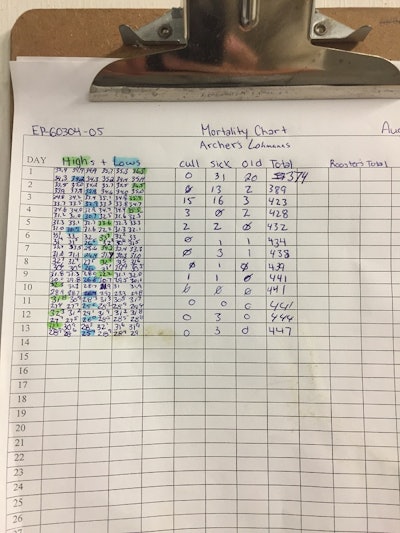
After battling for more than two decades to keep out avian influenza, commonly referred to as Al, egg producers should be welcoming in another type of AI - artificial intelligence.
Modern egg production requires the daily collection of various data. This ranges from readings from numerous temperature points in the barn to ammonia levels, from water and feed consumption by barn section to daily egg production, including the number of dirty, cracked or softshell eggs.
Most farms still rely on pen and paper to record information, under the strong belief that having workers write down countless numbers is proof that they are doing their job. Yet, manual collection of data is time-consuming and prone to error, either when recording numbers or transferring data into computers.
Four-step approach
The introduction of AI into our barns requires a four-step approach and has become easier due to the development of accurate sensors, fast internet and cloud computing.
The first step consists of automating data collection via precise and reliable sensors placed throughout the barn. Artificial vision and sound analysis systems will soon increase our ability to learn more about the environment in our barns and the behaviors of our birds.
The second step comprises the transfer of all data to a virtual storage system. Better networks, including fiber optic and 5G technology, facilitate this transfer process in terms of accuracy and speed.
The third step provides feedback to farmers on their flocks’ current status. A number of service providers are now offering this type of service to producers, with easy to use, interactive dashboards displaying flock status. Up to step three, however, the old pen and paper method can do the same job – even though it does take much more time.
The real value of AI lies in step 4 - using current data to predict the future.
The analytical strength of the human brain is limited to the interaction of two or three concurrent parameters - called features in AI jargon – however, a virtual storage system has few limits and algorithms that can be developed using 20 to 30 features.
Because the cost of a virtual storage system has decreased significantly, it is now cheaper to quickly crunch terra-bytes of data, uncover trends hidden from the human eye and make predictions.
To quote a well-known practitioner of AI, it is not who has the best algorithm who wins but, clearly, who has the most data.
The egg sector needs to accelerate its switch to digital data recording processes and start accumulating the massive amount of data needed to enjoy the full extent of AI’s predictive value. AI should truly be welcomed onto our farms!

















